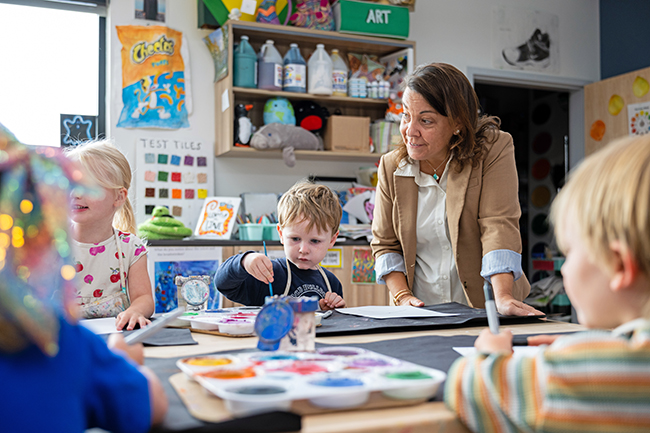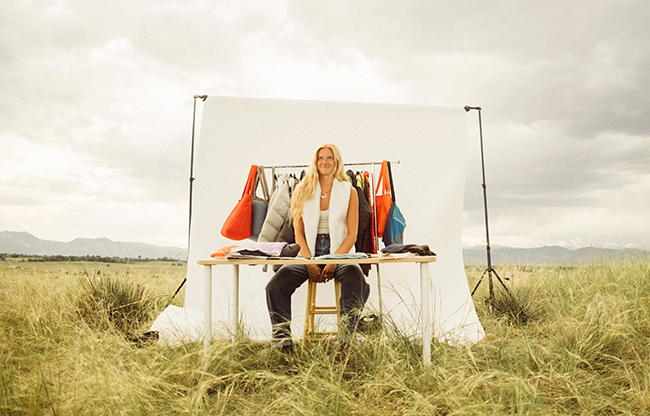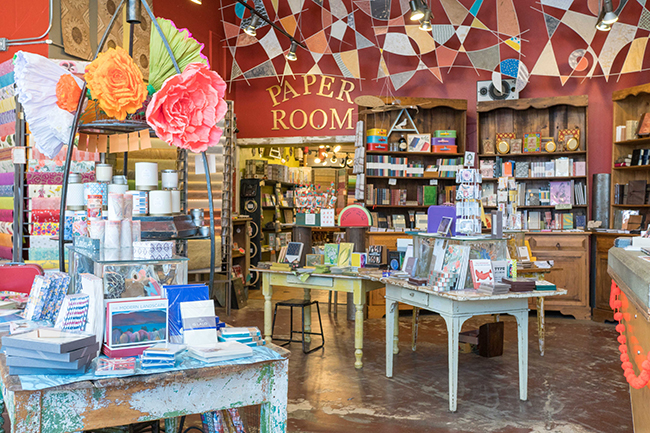Movers, Shakers and Boulder’s Makers
05 Jun 2016
Locals opt to slow down with handmaking and handcrafting
By Eli Wallace For Linda Spillmann, it all happened in a flash. “It was literally a light-bulb moment. One morning I woke up and said, ‘I’m going to open a fabric store in Boulder that sells lovely fabric and helps people learn to sew,’” says Spillmann, who owns Fabricate, a store that does exactly that.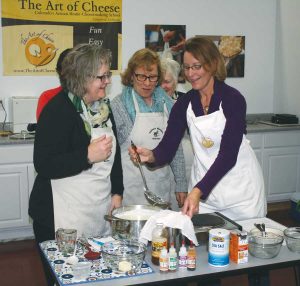
Maker Culture Unplugs & Empowers
“Maker culture,” as it’s been dubbed by national media, has been in the public eye since about 2006, when the first Maker Faire was held in San Mateo, Calif. The original faire focused heavily on DIY invention in the fields of science and engineering, although more recently the term has been applied equally to geeky 3-D–printer jockeys, hipsters whittling artisanal candleholders, and hemp-spinning neo-hippies. And the trend doesn’t seem to be slowing down, partly because it’s feel-good all the way around. Sara Martinelli, of Three Leaf Farm in Lafayette, sees making as a great way for communities and people to support one other by buying locally. She also sees a connection between the rise in maker culture and our society’s growing use of technology.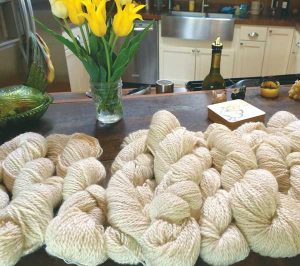 “For a generation or so, people have lost the knowledge of skills that used to be basic survival and life skills. Things like canning, making jam, pickling, food preservation, growing food, making medicine, beekeeping, etc., used to be everyday tasks,” Martinelli says. “As the world has become more technologically advanced, many of these skills have become unnecessary. It’s far easier to purchase a jar of jam at the store than to make a batch. While this is a blessing in most ways, it also somehow has made people feel less ‘in control,’” she says. “Learning these skills can empower someone in the ways of homesteading and survival, not to mention most of these skills are fun activities that can be considered hobbies today, rather than chores.”
Ali DeJohn, who owns The Makerie, echoes these sentiments. “When you can stop and make something with your hands, it’s such a rewarding experience that allows you to be totally present and able to focus on just what’s in front of you. In a world full of distractions, it’s refreshing to connect your mind and your hands,” she says. The Makerie offers multiday retreats involving multiple craft classes like letterpress, block printing and leather bracelet making, and participants enjoy the chance to unplug and focus on creativity.
In addition to the confidence gained from working with their hands, makers recognize that their crafts support a different kind of living, one that is more environmentally conscious and more socially responsible. “The best way to know what’s in your food is to make it yourself,” says Kate Johnson of Longmont’s The Art of Cheese. Johnson credits concerns with GMOs as one reason the trend has taken root in Boulder. For her, cheesemaking was a way to use excess milk from her daughter’s 4-H project goat. The Art of Cheese now offers classes teaching people to make over 30 different types of cheese.
Fabricate’s Spillmann says that backlash against “fast fashion”— quickly rotating collections of on-trend, super-cheap clothing (think Forever 21, H&M or Zara)—is partly responsible for the uptick in interest in homemade clothes and accessories. “People are becoming more aware of issues like fair wages and safe working conditions and are asking for answers,” she says.
“For a generation or so, people have lost the knowledge of skills that used to be basic survival and life skills. Things like canning, making jam, pickling, food preservation, growing food, making medicine, beekeeping, etc., used to be everyday tasks,” Martinelli says. “As the world has become more technologically advanced, many of these skills have become unnecessary. It’s far easier to purchase a jar of jam at the store than to make a batch. While this is a blessing in most ways, it also somehow has made people feel less ‘in control,’” she says. “Learning these skills can empower someone in the ways of homesteading and survival, not to mention most of these skills are fun activities that can be considered hobbies today, rather than chores.”
Ali DeJohn, who owns The Makerie, echoes these sentiments. “When you can stop and make something with your hands, it’s such a rewarding experience that allows you to be totally present and able to focus on just what’s in front of you. In a world full of distractions, it’s refreshing to connect your mind and your hands,” she says. The Makerie offers multiday retreats involving multiple craft classes like letterpress, block printing and leather bracelet making, and participants enjoy the chance to unplug and focus on creativity.
In addition to the confidence gained from working with their hands, makers recognize that their crafts support a different kind of living, one that is more environmentally conscious and more socially responsible. “The best way to know what’s in your food is to make it yourself,” says Kate Johnson of Longmont’s The Art of Cheese. Johnson credits concerns with GMOs as one reason the trend has taken root in Boulder. For her, cheesemaking was a way to use excess milk from her daughter’s 4-H project goat. The Art of Cheese now offers classes teaching people to make over 30 different types of cheese.
Fabricate’s Spillmann says that backlash against “fast fashion”— quickly rotating collections of on-trend, super-cheap clothing (think Forever 21, H&M or Zara)—is partly responsible for the uptick in interest in homemade clothes and accessories. “People are becoming more aware of issues like fair wages and safe working conditions and are asking for answers,” she says.
You Don’t Have to Be an Artist
Studies back up the therapeutic power of crafting. One University of Glasgow study concluded that creativity may be fundamental to well-being, and that all hobbies, especially quilting, improve cognitive and emotional function.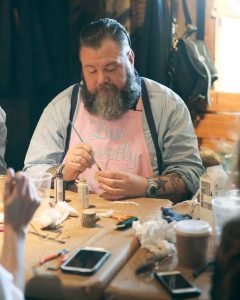 If you’re interested in trying out a new craft, Raj Chaudhari of Crafted Life in Lafayette recommends pushing past your doubts. “We are always surprised when we hear people who really truly believe they ‘cannot do it’ or they’ve tried and failed so ‘why try again?’” he says. “It’s not as hard or daunting as it may seem—there are lots of resources available where you can learn in a fun and warm environment without judgment.” The Crafted Life sells DIY kits and offers classes on topics like knitting, crochet and paper crafts.
“My philosophy is that creativity is an important part of living an inspired and wholehearted life, and that everyone is creative if they just give themselves a chance to find and nurture it,” says DeJohn. “The power of slowing down, connecting with people in person and using our hands to make things is a precious gift that keeps on giving.”
If you’re interested in trying out a new craft, Raj Chaudhari of Crafted Life in Lafayette recommends pushing past your doubts. “We are always surprised when we hear people who really truly believe they ‘cannot do it’ or they’ve tried and failed so ‘why try again?’” he says. “It’s not as hard or daunting as it may seem—there are lots of resources available where you can learn in a fun and warm environment without judgment.” The Crafted Life sells DIY kits and offers classes on topics like knitting, crochet and paper crafts.
“My philosophy is that creativity is an important part of living an inspired and wholehearted life, and that everyone is creative if they just give themselves a chance to find and nurture it,” says DeJohn. “The power of slowing down, connecting with people in person and using our hands to make things is a precious gift that keeps on giving.”
Eli Wallace enjoys writing screenplays and magazine feature articles. The rest of the time, she works at a local digital marketing agency. Learn more at www.emwallace.com.





